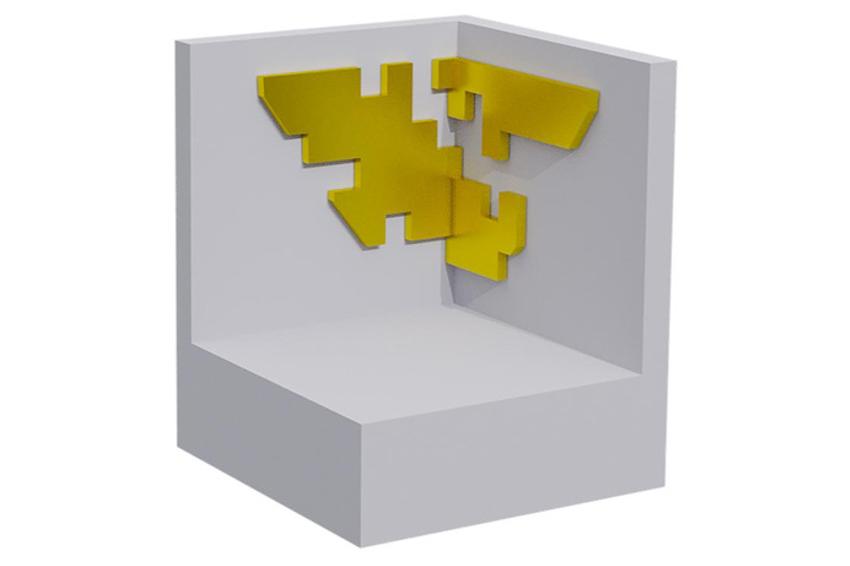Controlling light with 3D metamaterials
New approach to enable asymmetric transmission of light
Metamaterials, made up of small, repeated structures, engineered to produce desired interactions with light or sound waves, can improve optical devices used in telecommunications and imaging. But the functionality of the devices can be limited by the corresponding design space, according to Lei Kang, assistant research professor of electrical engineering at Penn State. Kang and interdisciplinary collaborators from Penn State and Sandia National Laboratories leveraged three dimensions of design space to create and test a metamaterial with robust optical properties.
“It’s not easy to efficiently explore design space for 3D metamaterial components, or unit cells,” Kang said. “But we have developed a variety of complex optimization techniques in our lab, and our collaboration with Sandia National Laboratories allowed for fabrication of very complex 3D structures at the nanometer scale. This unique combination of advanced capabilities provides a good strategy to explore 3D unit cells that can lead to sophisticated metamaterial functionalities.” One such functionality is enabling asymmetric transmission of light, in which light waves exhibit different power levels dependent on their direction of travel through a material. Realization of this phenomenon for light with linear polarization has often required bulky components due to design challenges, according to Kang. He said a nanoscale device permitting asymmetric transmission of linearly polarized light could lead to significantly more efficient optical devices, advancing technological applications in communications and more.
To identify an ideal unit cell design, the team developed a computational optimizer based on a genetic algorithm, which identifies new configurations by mimicking natural selection, with both self-designed and commercial software to target robust performance within set parameters. Applying this approach to a 3D space, however, presented unique obstacles and benefits when designing the optimizer. Generating designs in an additional dimension, while providing an additional degree of freedom for developing functional materials, required a higher computational load. The researchers also had to account for fabrication limitations: A simpler design would be easier to make but potentially deficient in function, while a complex design that performs ideally could be impractical or impossible to construct at the nanoscale.
In a recommendation engineered to meet these challenges, the optimizer simulated many arrangements of connected gold particles on the inside of a cube-shaped unit cell’s walls, targeting those that best supported robust asymmetric transmission of linearly polarized light across a wide frequency range. Researchers at Sandia National Laboratories fabricated the optimized design constructing many nanoscopic unit cells with cube-shaped cavities atop a silicon nitride base. A gold pattern was then stenciled and deposited onto two inside walls of each unit cell.
The Sandia team then tested the sample material by illuminating it with linearly polarized light. They found that the design performed as well as its computationally optimized and simulated counterpart, resulting in asymmetric transmission of the light across a wide range of frequencies. This behavior made the design promising for use in optic isolators, according to Sawyer Campbell, assistant research professor of electrical engineering. “As components in optical devices, optic isolators control and transmit light in only one direction, like a diode in an electrical circuit,” Campbell said. “These components are extremely important in telecommunications, control systems and other areas.”
The researchers said they aim to continue developing metamaterials using their optimization techniques and a variety of fabrication methods. “Creating more complicated 3D structures would allow us to expand on these findings,” Kang said. “New combinations of our advanced optimization methods and state-of-the-art 3D fabrication techniques could further propel the optical capabilities of metamaterials.” (Source: PSU)
Link: Materials Research Institute (D. Werner), Pennsylvania State University, University Park, USA






